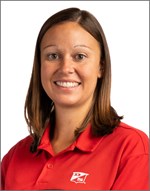Managing Lodged Soybeans; Safety is Number One; Enter to Win
BY Dairyland Seed Agronomy Team
HARVESTING LODGED SOYBEANS
Soybean lodging often occurs in areas of the field that have high fertility and moist conditions. The combination of moisture and high fertility causes lush vegetative growth that can lead to taller plants. These tall plants are at a greater risk of lodging, especially when exposed to severe storms that bring strong winds. Lodged soybeans are more difficult to cut and gather into the combine, which can slow down harvest and result in increased harvest losses. The following adjustments can help minimize harvest losses:
- Slow down the ground speed of the combine to 3 MPH or less.
- Lower the cutter bar as close to the ground as possible.
- Adjust the reel axle forward so it is 6 to 12 inches ahead of the cutter bar.
- Lower the reel to help pick up downed plants.
- Angle the pickup fingers back to help gather the plants.
- Increase the reel speed so it’s running 25 percent faster than the ground speed of the combine. In areas with significant lodging, the reel may need to be sped up to 50 percent of the ground speed. If the reel is shattering pods, then decrease the reel speed.
- Harvesting at an angle will help pick up downed plants. If plants are leaning in one direction, harvesting in the opposite direction of the lean will help significantly.
Figuring out which factors caused the soybean lodging will help greatly in decision making for next year.
- Some of the common causes are excessive rain fall during the vegetative or early reproductive stages, high planting populations, low soil potassium levels and soybean variety characteristics.
- Higher populations cause the soybean plant to compete for sunlight by growing tall and upright. Reducing the populations will result in a shorter, more stable bean.
- Low soil potassium levels can result in poor stalk strength so be sure to check soil tests.
- Soybean varieties differ in susceptibility to lodging, so factoring in lodging scores when selecting a variety will help manage areas with a history of lodging.
SAFETY
With the 2021 harvest season upon us, remember to take time to think about the safe way to work or do a job. During harvest season we may be running on less sleep, running on less-than-ideal nutrition and pushing hard to get a crop in before inclement weather hits and stops us. Amidst all these stresses, we need to remind ourselves, our family, and employees to do the job the safe way.
We have all done many of the jobs that need to be done ahead of, during, or after harvest, numerous times. We all know the best, safe way to do a job, and then we also know a short cut or two that is quick and we have done it that “quick way” countless times. The issue is the “quick way” may not always be the safest way, 99 percent of the time the “quick way” works, however, that 1 percent of the time could lead to an accident or worse.
Lastly, remember by doing it safely you are setting an example of how to do a job correctly. Others may watch how you do things. It could be your spouse, your children, your grandchildren or an employee. Set a good example and do it safely.
JOIN THE DAIRYLAND SEED ELITE PRODUCER CLUB
You can be a member of Dairyland Seed’s Elite Producer Club by submitting photos or testimonials of high performing products! Simply test a picture or testimonial of your high performing products to 913-DS-YIELD or 913-379-4353. The program runs from August 15 through December 1, 2021.
Participants will receive a free Dairyland Seed t-shirt (one per entry) and “Elite Yield Club” Certificate. All corn grain, corn silage and soybean products are eligible.
Qualifying products for “Elite Yield” Contest (one winner per family, per region, prize is 3 free units of product that was entered):
Region 1 = DS-3366 family; DS-3550 family; DS-4018 family
Region 2 = DS-3550 family; DS-4018 family; DS-4878 family; DS-5144Q
Region 3 = DS-4310 family; DS-4878 family; DS-5144Q
Region 4 = DS-3366 family; DS-3550 family; DS-4014Q; DS-4310 family
Information required in text: Participant; Location; Product; Yield in Bushels or Tons; T-Shirt Size; DSM; Mailing address if different than participant.
2021 YIELDMASTER CONTEST
Fall harvest kicks off the annual Dairyland Seed Corn, Silage and Soybean Yieldmaster Contest. Take a moment to enter your outstanding yields and you just might be our 2021 winner!
Seed Credits for Winners
- The National Corn, Soybean and Silage Yieldmasters will each receive a $2500 seed credit.
- First Place Corn, Silage and Soybean winners from each zone receive a $1000 seed credit.
- Second Place Corn, Silage and Soybean winners from each zone receive a $500 seed credit.
Entries can be submitted online at www.dairylandseed.com or via your DSM who can submit your entry using the iPad app. Silage entries are due November 3, 2021. Corn and Soybean entries are due December 3, 2021.
 |
 |
 |
 |
 |
| Brian Weller Western Region 507.456.3034 |
Dan Ritter Central Region 219.863.0583 |
Branden Furseth Northern Region 608.513.4265 |
Mark Gibson Eastern Region 260.330.8968 |
Amanda Goffnett Eastern Region 989.400.3793 |
